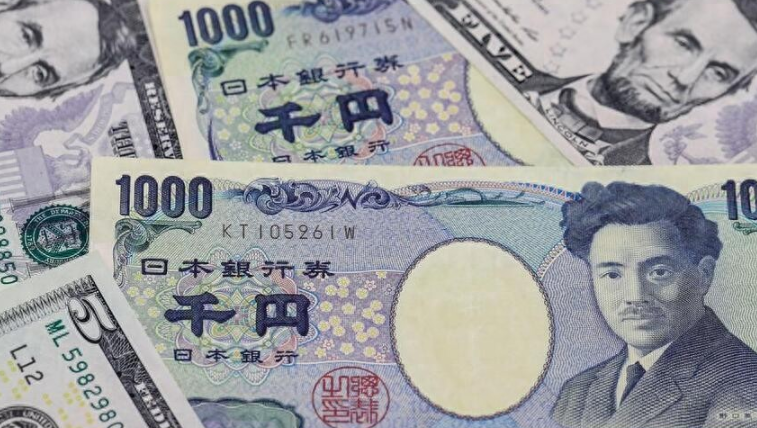In recent weeks, speculation surrounding the divergence in monetary policy between the Federal Reserve and the Bank of Japan (BOJ) has intensified, raising concerns regarding the speed of narrowing interest rate differentials between the two nations. Traders have begun to reduce their bullish bets on the Japanese yen, as expectations for the currency's appreciation have softened significantly.
As reports emerged ahead of a series of pivotal meetings last week, analysts had optimistically predicted that 2025 could be a breakthrough year for the yen. However, the outlook has dampened as BOJ Governor Kazuo Ueda indicated a slower timeline for potential interest rate hikes, contrasting with the Fed's signals of tapering its monetary easing measures in the upcoming year.
Market sentiment saw a notable shift after the recent policy meetings, with option indicators reflecting the lowest level of bullish sentiment toward the yen in a month. Furthermore, the U.S. Commodity Futures Trading Commission's latest data, covering the week ending December 17, revealed that leveraged funds had raised their net short positions on the yen to approximately 44,926 contracts, marking the highest level of bearish sentiment since July.
Major financial institutions, including Mizuho Securities and Sumitomo Mitsui Trust Insurance, have revised their forecasts for the yen's performance against the dollar. Mizuho has increased its end-of-2025 prediction for the USD/JPY exchange rate from 130 to around 145 yen, while Sumitomo Mitsui has also adjusted its estimate from 130 to 140 yen. Such significant downward projections reflect a serious reassessment of Japan's economic landscape and the BOJ's ongoing policies.
Sugihara Chuka, a market strategist at Sumitomo Mitsui, emphasized that the extreme hawkish stance of the Federal Reserve alongside the BOJ's dovish policy has prompted a reevaluation of future scenarios. "The probability of the BOJ hiking rates in January now appears markedly reduced," Sugihara commented, underscoring a wave of pessimism regarding the yen's prospects.
As market participants digested the implications of Ueda's statements during a press conference following the BOJ's decisions last Friday, the yen fell to a stark low of 157.93 against the dollar—its weakest point since July. His remarks highlighted the necessity for further data on Japanese wage dynamics in conjunction with U.S. policy developments before any decisive action could be considered.

Forex strategists caution that if the BOJ maintains its current interest rates through March or possibly beyond, the risk of further depreciation for the yen looms large. Some analysts speculate that the widening interest differential could give rise to a resurgence of yen carry trades, a popular strategy where investors borrow yen at low-interest rates to invest in higher-yielding assets abroad. This method had previously spurred significant market movements earlier this year, raising concerns over its potential recurrence.
Charlotte Chanana, Chief Investment Strategist at Saxo Bank, remarked, “The Fed's hawkish posturing combined with the BOJ's pauses may provide yen traders with renewed justifications for maintaining their positions.” She noted that the narrowing yield gap between U.S. and Japanese government bonds has largely been pushed into the first quarter of next year. Consequently, any possibility for yen appreciation might be stifled until the latter half of 2024.
On the first trading day of the week, the yen traded down by 0.1% against the dollar, settling at 156.42 yen. This consistent decline shapes a narrative of uncertainty and apprehension as traders reassess the yen's trajectory in the context of evolving monetary policies.
Previously, Mizuho had forecasted that the yen would soar to its highest levels against the dollar since early 2023 due to expected narrowing of the interest rate differentials and 10-year bond yield spreads between the U.S. and Japan. However, these predictions have swiftly changed in light of the Fed's latest policy expectations, which indicate that only two rate cuts of 25 basis points might occur next year.
In an insightful report, Mizuho strategists Yamamoto Masafumi and Miyahara Masayoshi stated, "Under the current conditions of relative strength in the U.S. economy and elevated interest rates, the dollar is likely to maintain its strength, prompting us to upgrade our dollar forecasts." This sentiment reinforces the outlook that, in the near term, trading dynamics will skew heavily in favor of the greenback.
While strategists project potential fluctuations in the USD/JPY exchange rate, concerns deepen over the yen's potential fall to 160 yen to the dollar. Such a movement could amplify the risk of intervention from the BOJ, prompting the central bank to react more aggressively, potentially culminating in a premature interest rate hike. The Japanese finance minister, Kato Katsunobu, along with currency policy chief Mimura Jun, issued stern warnings last Friday, asserting that they would enact appropriate measures to avert excessive volatility in the currency markets.
In an exhaustive report, Nomura Securities analysts Morita Kyohei and Goto Yuji expressed, "We believe the BOJ is more likely to delay interest rate hikes until March." This revision of their previous forecast for a January hike demonstrates the evolving landscape of expectations surrounding Japan's monetary policy. "In the short term, the risks of yen depreciation are significantly skewed, but we remain vigilant regarding any verbal interventions and the likelihood of the BOJ adopting a hawkish stance," they concluded.